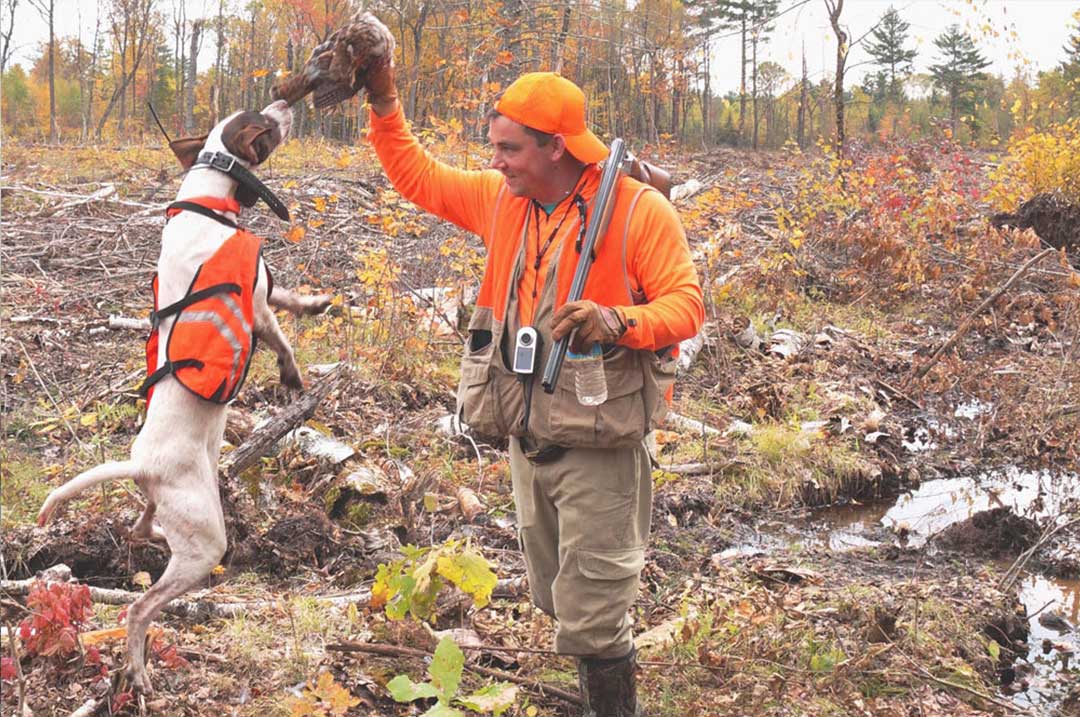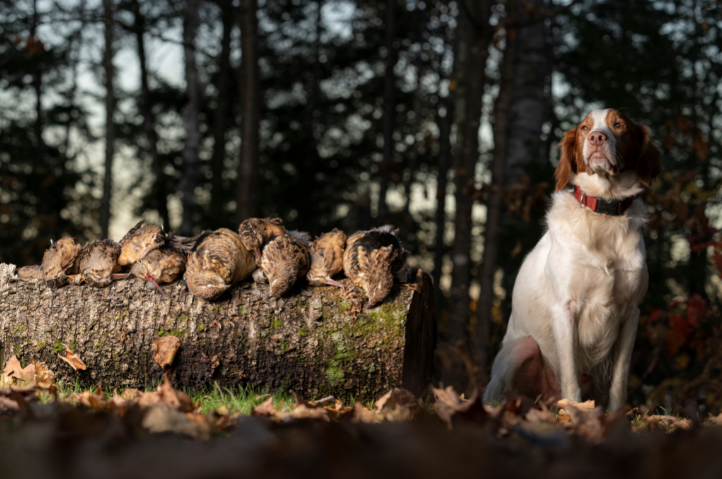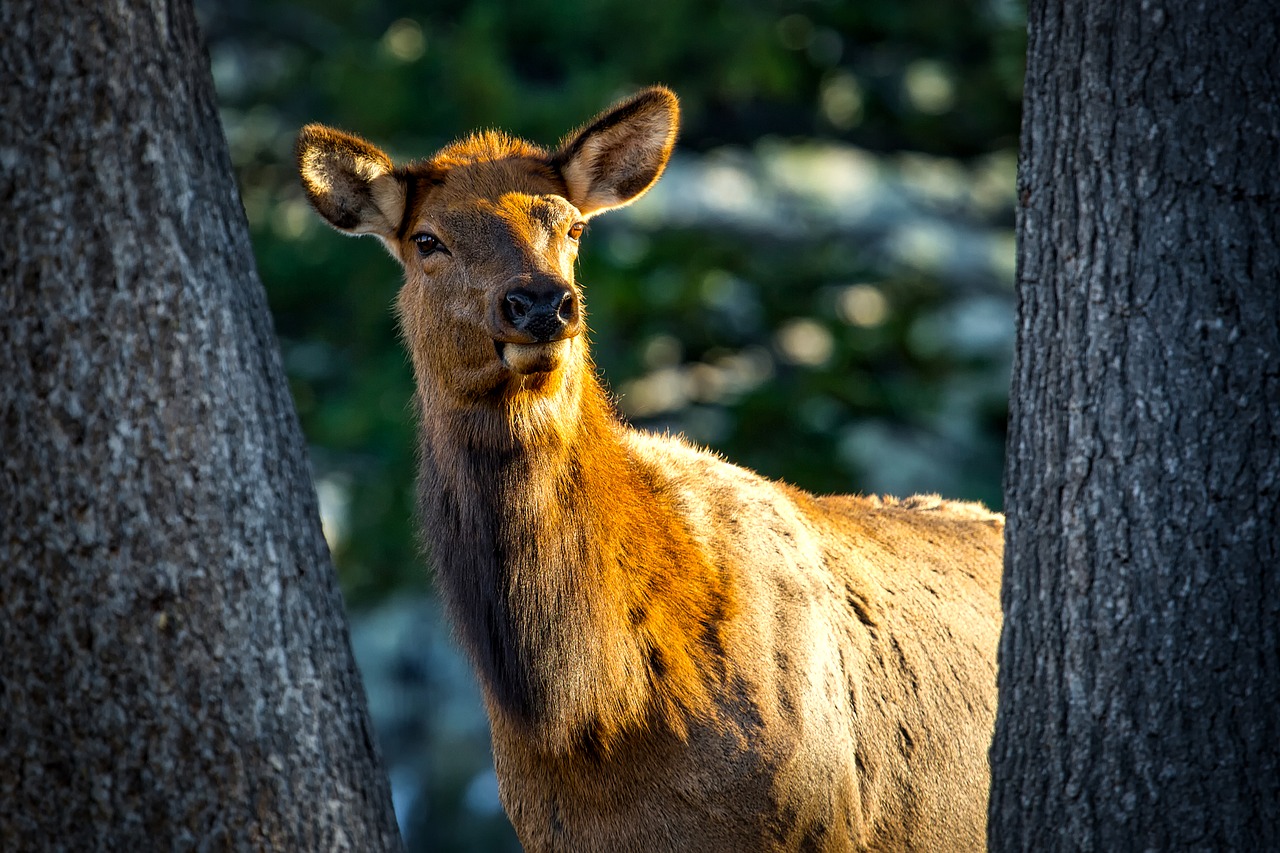One conservation organization warns aging forests could spell doom for many species.
With forest fires raging across the West, there’s been a renewed call to reexamine our nation’s forest management policies. Nearly 46,000 wildfires have burned more than eight million acres thus far this year. Many of those fires have been in zones where millions of acres of dead trees stand in the aftermath of the great mountain pine beetle die-off of the last decade. This historic scourge has claimed more than 40 million acres of forests across Western North America, creating a tinderbox that is likely to lead to many record fire seasons to come.
Long before America was settled, however, lightning and the subsequent fire it caused was a natural part of forest ecology. Many plant and animal species evolved to depend on the fires to activate seeds and spur new growth that provided both food and shelter for birds and mammals. Two such birds are the ruffed grouse and the American woodcock, forest dwellers that depend on young, thick cover to sustain them.

Hunters follow bird dogs into prime grouse and woodcock cover located in northern Wisconsin, some of the best habitat found anywhere in the grouse and woodcock range across North America. JOHN MACGILLIVRAY, DORSEY PICTURES
“As our forests mature in the absence of natural disturbances like fire,” says Dr. Ben Jones, President and CEO of the 60-year old Ruffed Grouse Society, “it’s becoming more difficult for these birds and many other species—including several that are endangered—to make a living. These birds are keystone species telling us that the forests are changing…and not for the better.”
What this 15,000-member organization, comprised mostly of devout bird hunters, is up against is the common perception that cutting trees is bad for the environment.
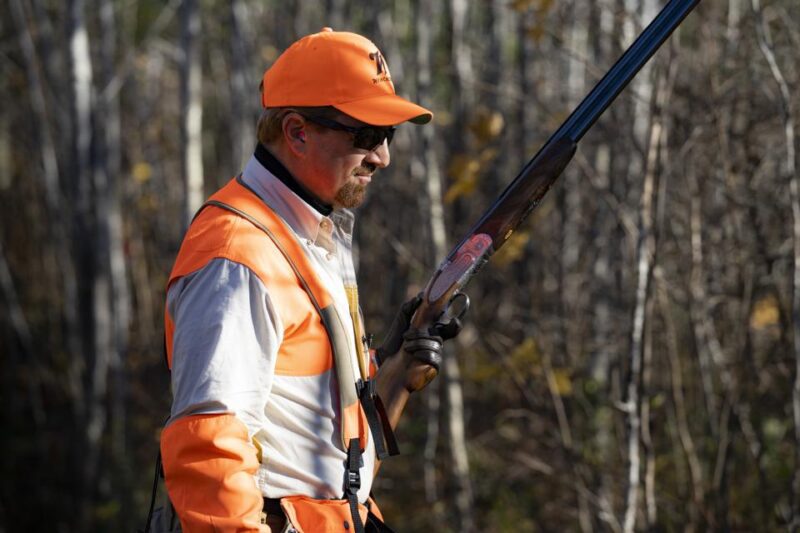
The Ruffed Grouse Society and its sister organization, the American Woodcock Society, are made up of some 15,000 hunters dedicated to advancing forest management practices that benefit both people and wildlife. JOHN MACGILLIVRAY, DORSEY PICTURES
“Humans have eliminated many natural factors that rejuvenate forests; beavers seen as a nuisance, fires snuffed out, storms more likely to impact human developments than initiate new forest growth and the like. To keep our forests healthy, we now have to emulate natural disturbances through forest management. People often equate the destruction of the Amazon rainforest or logging of old growth redwoods with all forests,” says Jones, “but when it comes to many of the timberlands of North America, cutting trees is not only good for forest renewal, it’s beneficial to many species of wildlife from deer, turkeys and grouse to myriad neotropical birds, butterflies, and other animals. This is to say nothing of mitigating the impacts of invasive pests, disease and forest fires.”
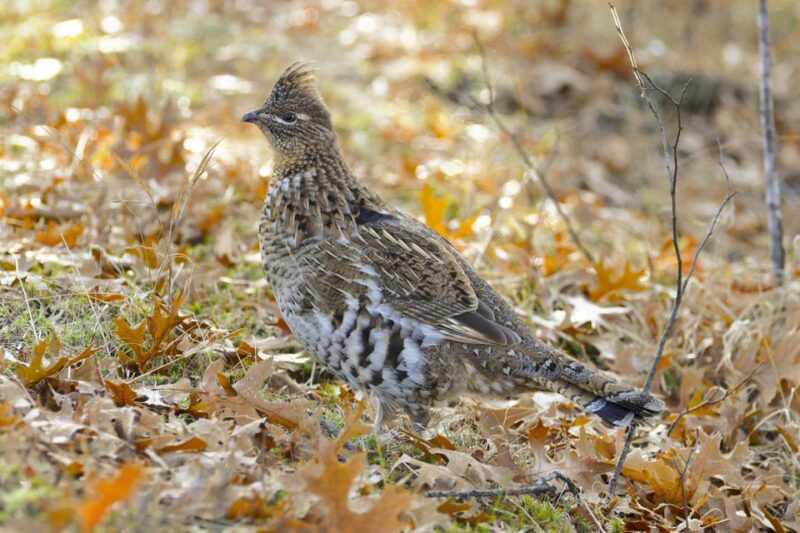
A ruffed grouse poses amid the leaf litter of a mixed hardwood forest the bird calls home. Grouse are keystone species that have been in decline as less logging has taken place thanks to widespread paper recycling efforts and other factors. GETTY
The mixed hardwood forests of the upper Midwest, Appalachians and New England are prime habitat for both ruffed grouse and woodcock and these species, along with many others, benefit from regular timber harvests that create forest patches of various ages—some young and thick with many new stems and others more mature with larger trees and less underbrush. Trees in various stages are needed for grouse and woodcock to flourish in these regions.
“The timber cutting effectively replaces what fires once did,” says Jones. “These birds and other wildlife need stands of mixed aged trees in close proximity to one another to thrive.”
With changes in forest product markets caused by paper recycling, trade policies and other factors, however, there has been less timber cut and the result has been wildlife declines across the range of grouse and woodcock. In 18 of the states where grouse and woodcock are found, the birds are now listed as species of concern because their numbers continue to decline as a result of the loss of the new-growth habitat they need to survive.
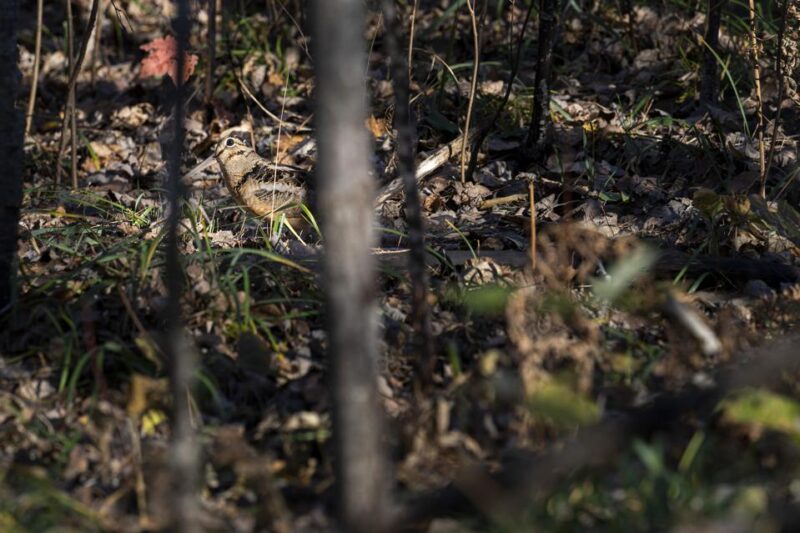
An American woodcock is a migratory species that is found across much of the Eastern U.S. and Canada and depends on young forested habitat to survive. JOHN MACGILLIVRAY, DORSEY PICTURES
For Jones and the Ruffed Grouse Society (and its sister organization the American Woodcock Society), changing times have called for a new approach to helping these woodland bird species. By working with legislators, community leaders and the forest products industry to help open up new markets for pulp, particle board and other wood products, the organization sees opportunity across many rural communities for improved forest health, economic development, fire mitigation and sustainable habitat for their beloved birds and other species.
“We have to look at how we can have the greatest impact for these species in the shortest amount of time at the least cost,” says Jones. “Essentially, we need to work with many other private and public groups to be a catalyst that can make a real difference for the future of grouse and woodcock…and all those who win when these birds have a bright future.”
This article originally appeared in Forbes. Follow Sporting Classics TV host Chris Dorsey at Forbes.
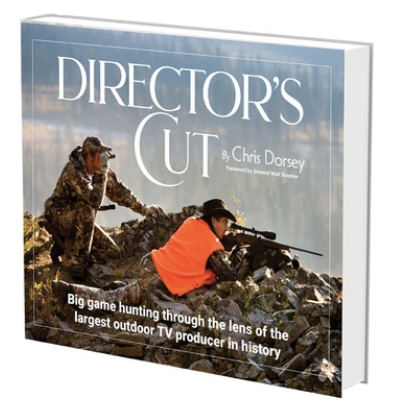 The World Of Sporting Literature Has A New Classic from one of the planet’s most widely traveled hunters. Director’s Cut…Big game hunting through the lens of the largest outdoor TV producer in history, is a book and film production more than 15 years in the making. Author and Executive Producer Chris Dorsey, along with a team of the world’s best sporting life photographers and cinematographers, embarked on expeditions to distant corners of the globe to create an indelible portrait of big game hunting.
The World Of Sporting Literature Has A New Classic from one of the planet’s most widely traveled hunters. Director’s Cut…Big game hunting through the lens of the largest outdoor TV producer in history, is a book and film production more than 15 years in the making. Author and Executive Producer Chris Dorsey, along with a team of the world’s best sporting life photographers and cinematographers, embarked on expeditions to distant corners of the globe to create an indelible portrait of big game hunting.
Dorsey has spent the past 25 years investigating and chronicling the animals, people and unforgettable places home to remarkable big game hunts while producing nearly 60 outdoor adventure television series. In the process, his teams amassed a library of more than 100,000 hours of HD footage and nearly 150,000 photographs, making Director’s Cut (the book and DVD) an unmatched celebration of the world of big game hunting. Buy Now


